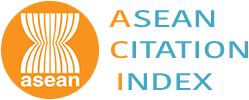Abstract
The success of the BRICS agenda is influenced by a set of external and internal factors related mainly to its competition with US-led multilateral formats (such as QUAD, I2U2, the new Indo-Pacific Economic Structure, and the Blue Dot Network investment platform), as well as political and economic controversies within BRICS, primarily the ongoing tensions between India and China as well. The purpose of this article is to provide a comprehensive analysis of the factors affecting the multilateral cooperation of the BRICS countries. India’s strategic priorities are crucial for the BRICS’s effectiveness, as the country participates simultaneously in BRICS and a set of U.S.-led exclusive integration initiatives and aims to balance different groups of contradicting interests. The authors conclude that the economic agenda of all platforms (including BRICS) has several overlaps: “clean” energy, food security, transportation, and infrastructural development. Priority areas of cooperation within the BRICS are as follows: (a) financial cooperation and movement towards de-dollarization, (b) the development of alternative energy sources, and (c) cooperation in ensuring food security with enhanced involvement of the United Arab Emirates. The expansion of BRICS and the inclusion of the United Arab Emirates significantly strengthens the multilateral format and gives it additional competitive advantages over the I2U2 and other U.S.-led initiatives.
Recommended Citation
Arapova, Ekaterina Y. and Kudinov, Alexei S.
(2025)
"Influence of U.S.-led Integration Initiatives and China-India Controversy on the BRICS Development,"
Asia-Pacific Social Science Review: Vol. 25:
Iss.
1, Article 7.
DOI: https://doi.org/10.59588/2350-8329.1560
Available at:
https://animorepository.dlsu.edu.ph/apssr/vol25/iss1/7




